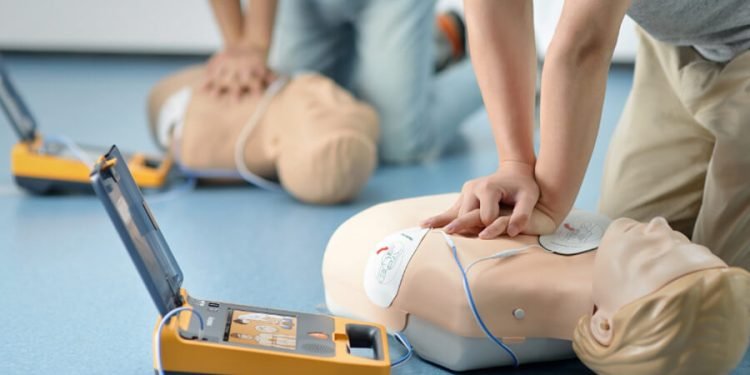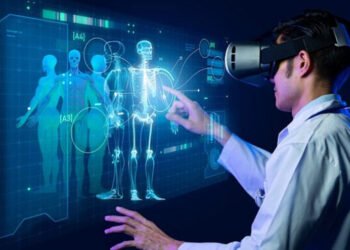A defibrillator AED is an important tool in the fight to reduce the number of deaths by cardiac arrest. With more than 300 000 individuals suffering cardiac arrest annually, many can be rescued from certain death with the use of these devices. From a public health perspective, automatic external defibrillators (AEDs) can be very useful in significantly reducing the number of those that die due to this condition.
Defibrillation: Normalizing a Heart’s Rhythm
The human heart helps to sustain life by pumping blood throughout the body within the cardiovascular system. It consists of a natural electrical system that enables it to do this. Key components of this electrical system include the sino-atrial (SA) node, which initiates the electrical impulse to make the heart’s chambers pump blood. Others include the atrioventricular node (AVN) which is crucial in the spread of the generated electrical impulses.
A sudden cardiac arrest (SCA) is when the heart stops beating. Usually, it is due to an issue with the heart’s electrical components like the AVN. Sometimes, it could be due to an underlying medical condition or a heart condition someone was born with. Regardless of the cause, an SCA can be lethal if assistance isn’t rendered immediately. Severe brain damage can set in within a few minutes if blood circulation isn’t restored. Death usually occurs in a little over 10 minutes.
Administering cardiopulmonary resuscitation (CPR) is the best way of saving such people.
AEDs are a crucial part of this CPR process.
Effectiveness of a Quick Response with an AED
A sudden cardiac arrest can occur without warning. While many of the victims tend to have a history of a heart problem or some other predisposition, a seemingly normal individual can suffer an SCA.
A quick response is the only way of giving such a victim a chance at life. That’s why having AEDs in homes and public places is crucial in the fight toward reducing SCA deaths significantly.
Time is always a crucial factor as far as an intervention with an AED is concerned. It is estimated that a patient’s chances of survival after suffering an SCA decrease by up to 10 percent for every minute wasted without administering CPR in conjunction with an AED.
Relying on emergency medical services isn’t always feasible. This is especially true for those that suffer a sudden cardiac arrest in isolated places like underground parking lots. This is one of the main reasons to advocate for having AEDs in all public places and homes.
The latest AEDs are easier to use even for those completely unfamiliar with the device.
Having someone use the AED on the victim of sudden cardiac arrest will help to keep them alive long enough until they can get proper medical attention.
Operating an AED
As soon as you see a victim of a sudden cardiac arrest, locate the AED quickly. Ensure that the victim isn’t on a wet surface. Move them if they are. Turn the AED on. It’ll have voice prompts to tell you what to do.
Remove all articles of clothing from their chest. If there is moisture or perspiration, wipe it off. Place the pads correctly. One should be placed on the chest’s right upper side. The other should be placed on the left side, a few inches below the armpit. If the victim has a small stature, the pads may touch when placed as indicated. In such cases, place one pad on the back and the other in the middle of the chest.
Assuming the pads aren’t attached to the AED yet, plug them in. The device will analyze the victim’s heart rhythm to determine if a shock is necessary. Ensure that everyone is clear of the victim while this happens. Shout if you have to. If the device determines that a shock isn’t necessary, start CPR immediately.
Press the “shock” button when the device prompts you to. Continue to administer CPR after the device delivers the shock.
In addition to ensuring the victim isn’t on a wet surface, you may need to shave their chest if it has significant hair. Such hair could impede the delivery of the shock, making it ineffective. Some of the latest devices now come equipped with a shaving kit to do this.
Advocating for More AEDs
Given that the presence of an AED can mean the difference between life and death for a victim of sudden cardiac arrest, it stands to reason that having more of them available will serve communities well. For instance, employers can ensure that these devices are available at their workplaces and organize sensitization workshops to spread the word about their importance. Similarly, people should have them at their residences and endeavor to learn all they can about how and when to use them.












